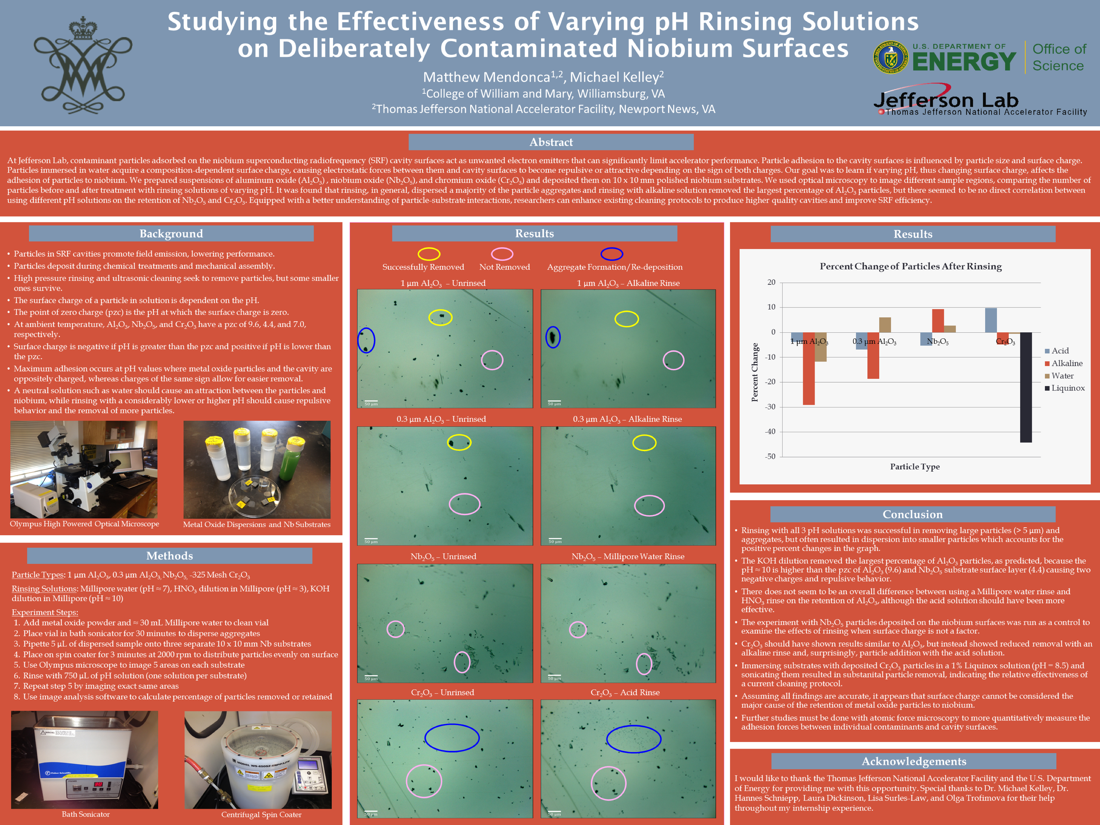Undergraduate Research at Jefferson Lab
Studying the Effectiveness of Varying pH Rinsing Solutions on Deliberately Contaminated Niobium Surfaces
Student: Matthew Mendonca
School: College of William & Mary
Mentored By: Michael Kelley
At Jefferson Lab, contaminant particles adsorbed on the niobium superconducting radiofrequency (SRF) cavities act as unwanted electron emitters that can significantly limit accelerator performance. Particle adhesion to the cavity surfaces is influenced by particle size and surface charge. Particles immersed in water acquire a composition-dependent surface charge, causing electrostatic forces between them and cavity surfaces to become repulsive or attractive depending on the sign of both charges. Our goal was to learn if varying pH, thus changing surface charge, affects the adhesion of particles to niobium. We prepared suspensions of aluminum oxide (Al2O3), niobium oxide (Nb2O5), and chromium oxide (Cr2O3) and deposited them on 10 x 10 mm polished niobium substrates. We used optical microscopy to image different sample regions, comparing the number of particles before and after treatment with rinsing solutions of varying pH. It was found that rinsing, in general, dispersed a majority of the particle aggregates and rinsing with alkaline solution removed the largest percentage of Al2O3 particles, but there seemed to be no direct correlation between using different pH solutions on the retention of Nb2O5 and Cr2O3. Assuming all findings are accurate, it appears that surface charge cannot be considered the major cause of the retention of metal oxide particles to niobium.

Citation and linking information
For questions about this page, please contact Education Web Administrator.
